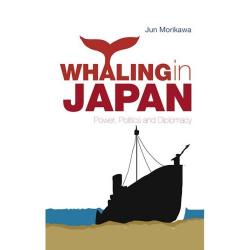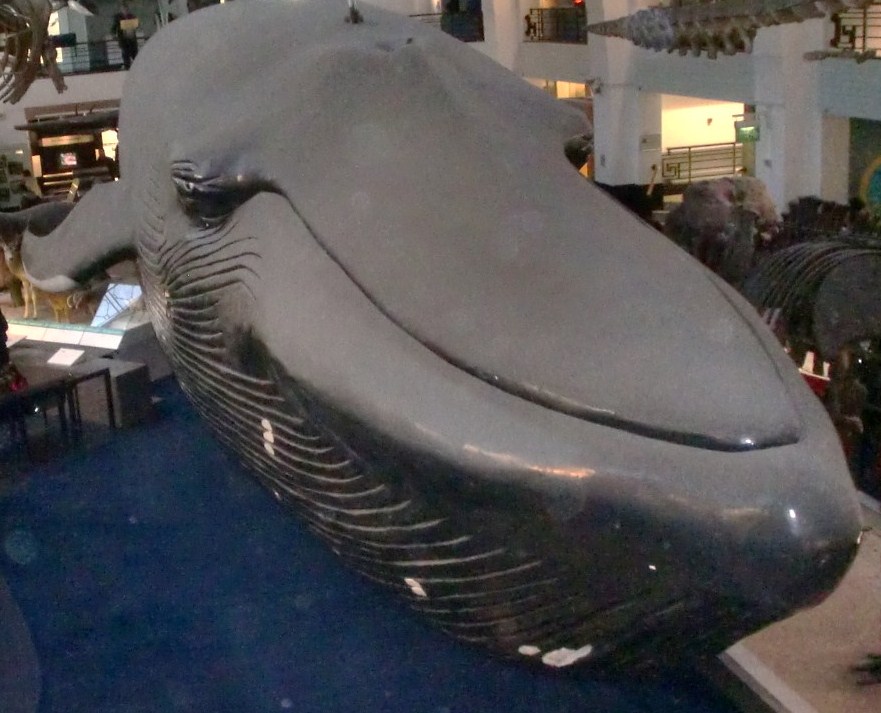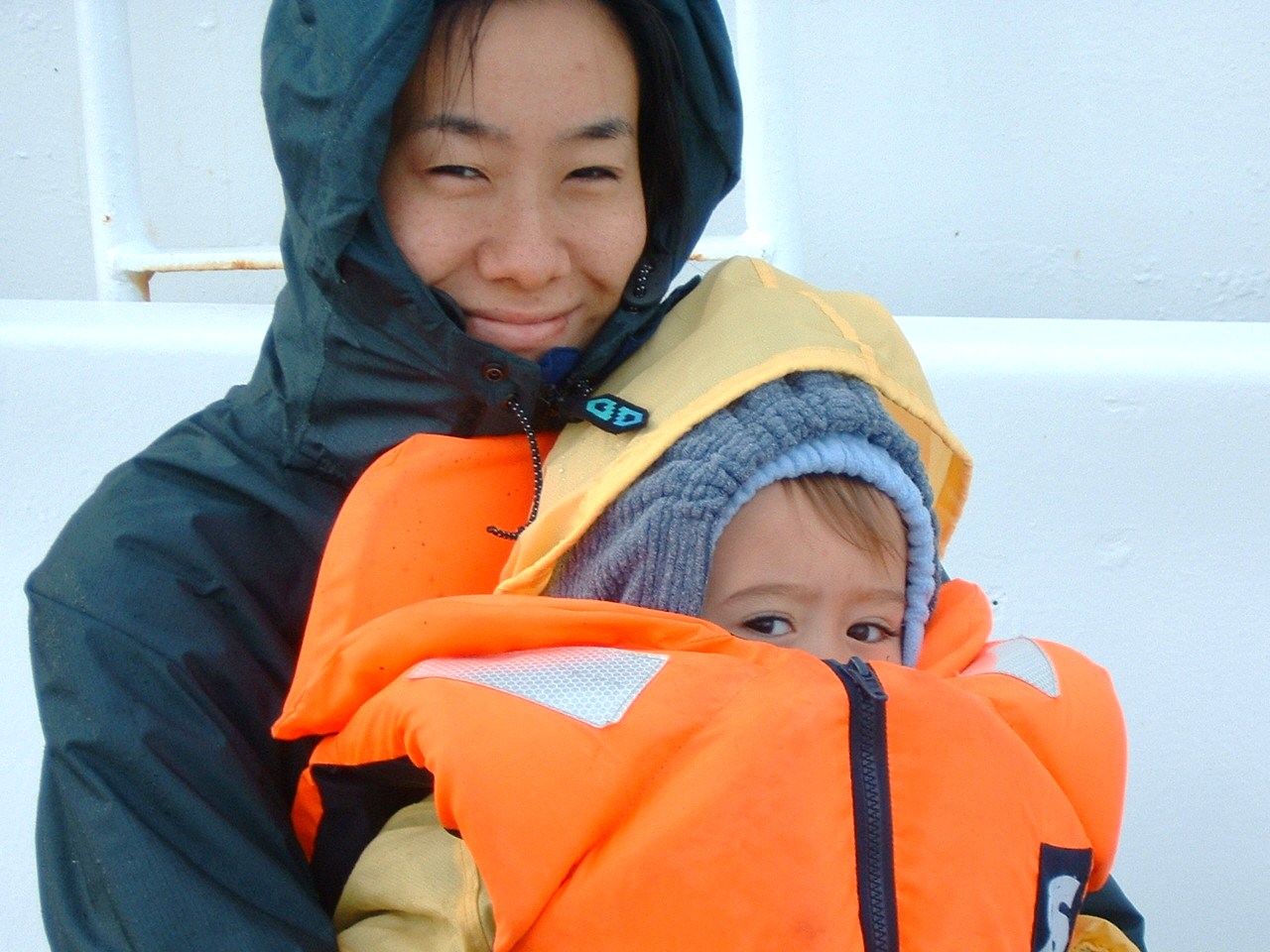Whaling in Japan: Power, Politics and Diplomacy

by Jun Morikawa (森川 純), C Hurst & Co Publishers Ltd, August 2009, 256 pages, ISBN-10: 1850659842 (paperback) £15.99
Review by Sean Curtin
Tokyo’s combative stance on whaling often seems at odds with its trademark consensual approach to international affairs. This position seems even stranger when one considers that the vast majority of the public have little interest or enthusiasm for the topic, yet the government vigorously pursues a highly controversial pro-whaling policy which tarnishes the country’s image. Furthermore, very few Japanese actually like whale meat resulting in huge unconsumed mountains of it piling up. The most recent annual figures show a staggering 6000 tons of uneaten whale being stored at great expense in 2010 (Japan Time, 5 January 2011). Professor Jun Morikawa’s meticulously researched book offers some illuminating insights on these conflicting positions and unlocks the puzzling contradictions which surround this contentious issue.
Morikawa commences his in-depth investigation by methodically examining the official reasoning for the current policy. Early on he clinically demolishes one of the government’s key justifications for its actions; the so called “traditional Japanese whale-eating culture” argument which Tokyo claims is a unique and integral part of its cultural heritage. By carefully documenting the real history of Japanese whaling Professor Morikawa demonstrates that it is not actually a national tradition with a centuries old history but is in fact an atypical practice conducted in a few remote areas. He notes, “the phenomenon that allowed whale-eating to actually move beyond geographic and subcultural boundaries to become part of the national Japanese culture existed for only an extremely brief period of 20 years, from the post-war reconstruction era in the late 1940s to the early 1960s (page 29).”
After the war there were severe food shortages and a general lack of a nutritional diet. Under these exceptional circumstances and for a limited period whaling played a part in helping feed the war-ravaged nation. However, this relatively short-lived postwar phenomenon does not equate to what Tokyo claims is an “indigenous whale-eating culture” or a “unique culinary culture.”
The author also identifies an illuminating contradiction, while Tokyo demands that the international community pay “mutual respect” to its perceived “traditional whale eating culture” it simultaneously denies such respect to its own indigenous Ainu people who inhabit the northern island of Hokkaido. They are not allowed to conduct their traditional salmon fishing practices in Hokkaido’s rivers. Salmon fishing was an integral part of their culture but today Tokyo prohibits them from following their “unique culinary culture.” The state only allows the Ainu to fish in the rivers on “a few designated ceremonial occasions (page 17).” This fact makes Tokyo’s claim of cultural imperialism seem far less credible.
Next, Morikawa blows a significant hole in the official narrative of Japan’s so called “magnificent whaling history” by carefully chronicling the historical development of what was a relatively minor regional industry. Also, until recent decades it was mainly limited to the country’s coastal waters, he concludes, “The history of large-scale whaling in Japan’s coastal seas was short, amounting to no more than 80 years (page 23).” This effectively ended in 1987 with the closing down of the last two major whaling companies on economic grounds because “the whaling industry was financially not viable” (page 26) and there was no real market for whale meat. Market forces effectively buried the industry and its tombstone would have read 1987 if it were not for the substantial intervention of bureaucratic and political elites which had a vested interest in reviving the dead industry’s corpse.
The Fisheries Agency (水産庁), an external arm of the Ministry of Agriculture, Forestry and Fisheries (MAFF), played a crucial role the resurrection. It did this primarily to safeguard its own bureaucratic power and prestige. If the industry had been allowed to die a natural death, then it would have lost a considerable amount of its budget as well as a major slice of its authority, something that was anathema to its bureaucrats. Morikawa contends that the Fisheries Agency and its associated political elites decided to pump life back into the moribund sector primarily to preserve their own bureaucratic power and prestige, other considerations were secondary. Morikawa comments, “It is crucial to remember that the Japanese ‘national consensus’ on the whaling issue has been created, approved and ceaselessly reinforced by a very small number of interest groups…(page 65).”
According to Morikawa, it appears that Japan’s controversial whaling policy is not conducted on behalf of the public or in order to preserve an important historic tradition or vital national interest, but rather it is done for the benefit of a tiny band of bureaucrats and politicians. It is this group that has constructed the pseudo-traditions surrounding whaling, presented it “as if it symbolizes Japan’s national interests and cultural traditions (page 6)” and elevated “whaling far beyond its actual importance (page 79).”
Not surprisingly, a large portion of the book focuses on this minute but immensely powerful band of behind-the-scenes players that are actually responsible for shaping and sustaining Japan’s pro-whaling stance in the face of overwhelming public disinterest and ever growing mountains of uneaten whale meat.
The pro-whaling cabal comprises bureaucrats, mainly from the Fisheries Agency, along with politicians and industrialists with strong ties to the fishing industry and related bodies. The author provides an in-depth overview of this interlocking web of vested interests. He explains how retiring senior bureaucrats from the Fisheries Agency slide into top posts in well-funded pro-whaling bodies such as the pivotal Institute of Cetacean Research (日本鯨類研究所). On this body, Morikawa observes, “The ICR plays a crucial role in keeping Japan’s awkward pro-whaling position afloat with its contributions on the theoretical, educational and financial fronts, as well as its involvement in whale meat marketing and the moulding of public opinion (page 47).”

The Institute of Cetacean Research plays a crucial role
in sustaining Japan’s whaling policy
Since the mid-1980s the Fisheries Agency has been the prime mover shaping Japan’s foreign policy on whaling and not the Ministry of Foreign Affairs (MOFA), which has rather astonishingly been relegated to the sidelines of this high profile and contentious international issue. This is an extremely unusual situation given the fact that whaling has been designated as a national economic issue and dealing with it takes up a substantial amount of MOFA time. Morikawa observes, “the Ministry of Foreign Affairs became unable to control the arbitrary actions of the Fisheries Agency, which resulted in a worrisomely fragmented diplomatic approach (page 54).” While MOFA diplomats have to defend the whaling position in public, I have found many are prepared to concede in private that the policy does not represent an issue close to the public’s heart or a genuine national economic issue. Many complain it is a time-consuming and highly costly distraction from substantive national issues. Opinion polls show overwhelming disinterest in the topic and “the general public seems to spend very little time thinking about the whaling issue at all and its knowledge is shallow at best (page 74).”
One of whaling’s longstanding foreign policy objectives has been to exert influence over the International Whaling Commission (IWC), which is the global body that regulates whaling. Since the 1970s the majority of IWC members have largely taken a conservational and anti-commercial whaling stance which resulted in a 1986 moratorium on commercial whaling. This halted the annual factory-style slaughter of tens of thousands of animals and was later followed by the establishment of the Southern Ocean Whale Sanctuary in 1994. Japan has invested considerable resources in trying to reverse this trend and create a pro-whaling majority at the IWC. To this end it has used a variety of methods to achieve its goal. Most controversial has been the use of Overseas Development Aid (ODA) to get countries with no whaling or maritime history to join the IWC to create a pro-whaling, pro-Japan majority.
Using financial incentives Tokyo has persuaded a large number of new member countries to join the IWC since 2000 including landlocked nations with absolutely no seafaring connections such as Mongolia and Mali. For example in 2007 Prime Minister Shizo Abe persuaded landlocked Laos to join the IWC after pledging $1 million in aid (page 88). Morikawa methodically documents how Tokyo has got a large number of developing countries to join the IWC through the use of ODA (chapter 5), he comments, [the] “increase in pro-whaling IWC member states, entering at a rate of three to five a year since 2000, is a direct result of Japan’s efforts…(page 86).” As a result the IWC has become a more pro-whaling body and while Tokyo has not yet created a majority, it has succeeded in deadlocking the organization. The 2010 IWC meeting in the Moroccan city of Agadir had to be suspended for a year due to the impasse created over the proposal to ease the ban on commercial whaling (23 June 2010, Japan Times).
A subservient Japanese media greatly helps keep the pro-whaling forces in the ascendancy by giving the whaling industry a positive press, stressing its supposed cultural and pseudo-historical merits while failing to give a rounded picture of the facts. The author laments, “the virtual absence of any investigative reporting on the whaling issue (page 72).” Morikawa and others have demonstrated that the historical facts are at odds with Tokyo’s official whaling narrative yet the media continues to perpetuate the state-constructed myth. This propaganda can even be found in the country’s English language newspapers that generally take a more critical line, for example the Japan Times reported, “whaling is deeply rooted in Japanese history and is an important part of Japanese culinary culture. There is a section in the ‘Kojiki,’ which dates from the early eighth century and is the oldest extant chronicle in Japan, that indicates whale meat was dedicated to the legendary Emperor Jimmu, the first emperor of Japan, suggesting a long relationship between Japan and whaling (Japan Times, Sunday, 20 February 2011).
Yet despite a pro-whaling media, enormous sums spent on PR and expensive whale meat promotion campaigns, the Japanese public remains overwhelming disinterested in the topic while massive quantities of uneaten whale meat continue to stack up in vast warehouse complexes.

Could whale-watching ever replace whaling in Japan?
Morikawa concludes the book by looking at four possible scenarios for whaling’s future in Japan. In the first the status quo is maintained, in the second Japan takes a more aggressive and confrontational approach, the third sees a gradual transition away from whaling to a limited form of the industry while the fourth envisages a complete move away from whaling to whaling watching. The author is uncertain which one of the four paths will be followed. The sheer cost of sustaining the whaling industry and public disinterest might suggest that options three and four would be the most likely. However, after the devastating Tohoku earthquake and tsunami of 11 March 2011, which it is estimated cost the aquaculture industry ¥100 billion, the government ploughed some of its limited resources into maintaining whaling. This indicates that despite the financial constraints and other difficulties Tokyo remains determined to pursue its whaling policy, making any of the four scenarios possible.
This is an excellently researched book which meticulously explains the conflicting dynamics of Japan’s whaling policy and makes a seemly illogical strategy comprehensible. Its broad analytical framework greatly enhances our understanding of the topic making a substantive contribution to the field. Professor Morikawa is to be commended for having produced this insightful and first-class piece of work.

